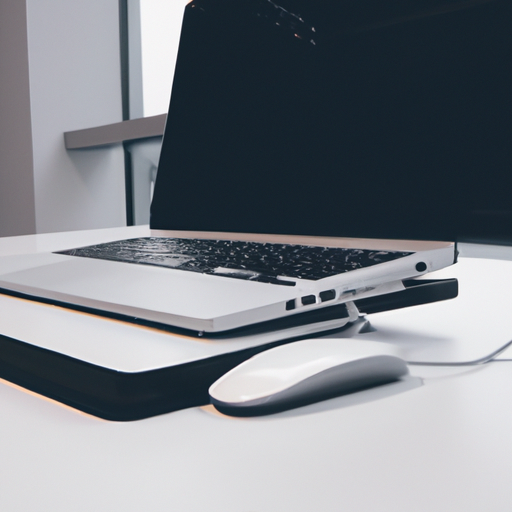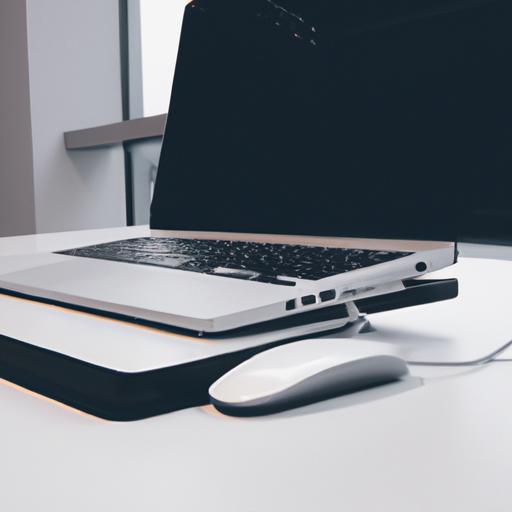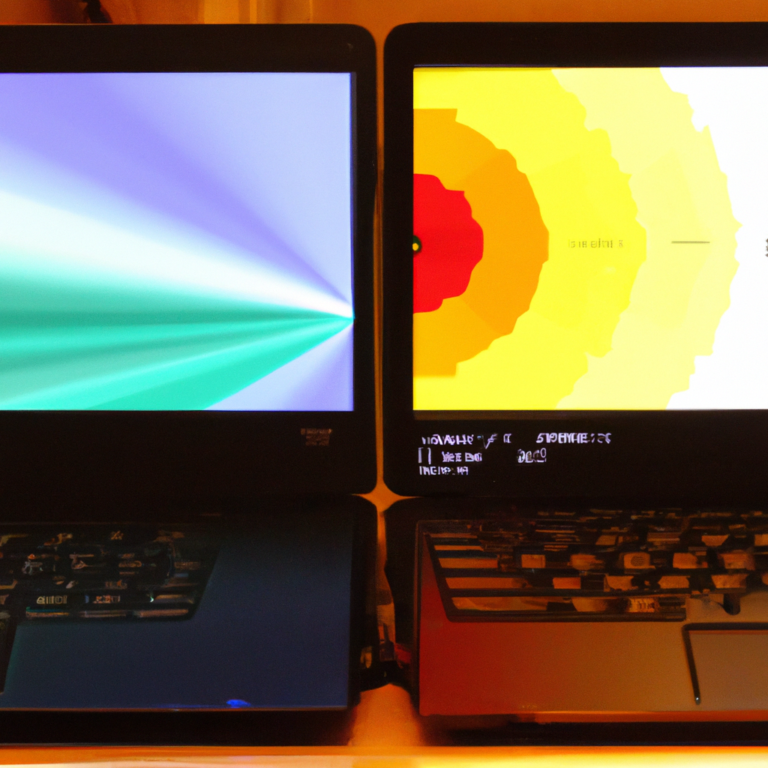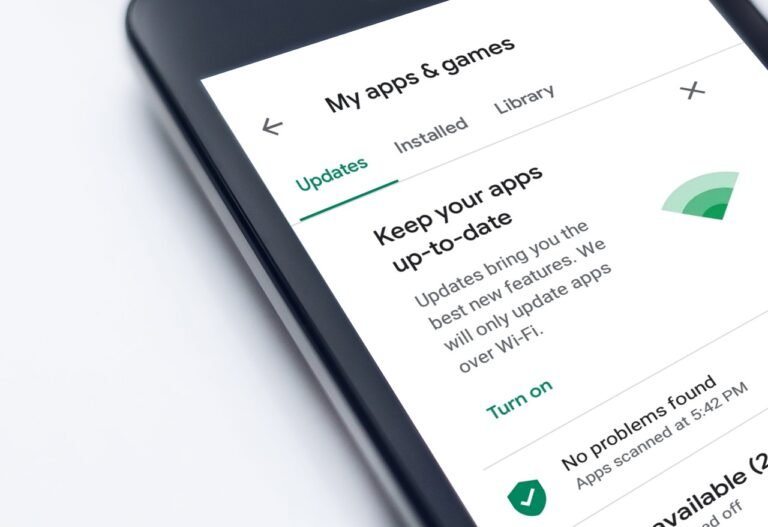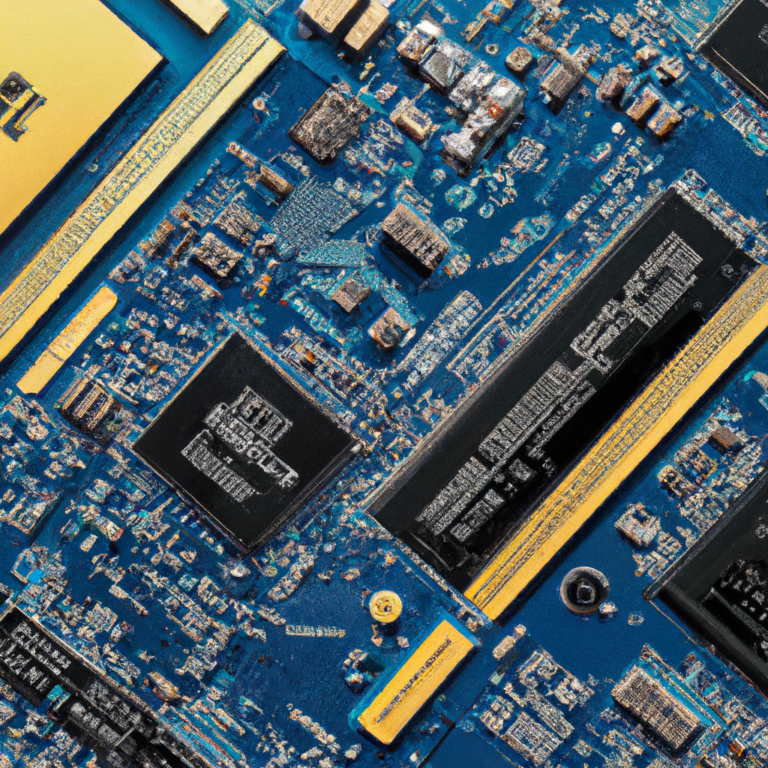How Does A Laptop Differ From A Desktop Computer?
Have you ever wondered about the differences between a laptop and a desktop computer? Well, look no further! In this article, we will explore the distinctive features that set these two types of computers apart. So, whether you’re a tech enthusiast or simply curious, join us as we unravel the fascinating world of laptop and desktop computers.

This image is property of pixabay.com.
Check out Top 10 Laptops Reviewed
Design
When it comes to design, laptops are known for their sleek and compact form factor. They are designed to be portable, allowing you to easily carry them wherever you go. The size and weight of laptops vary, with some models being as thin as a few millimeters and weighing less than a pound. This makes them perfect for users who are constantly on the move or need to work while traveling.
Form Factor
Laptops are designed to have a clamshell form factor, consisting of a screen attached to a keyboard base. This design allows you to open and close the laptop, protecting the screen and keyboard when not in use. The screen and keyboard are connected via a hinge, which allows you to adjust the angle of the screen for optimal viewing.
Portability
Portability is one of the main advantages of laptops compared to desktop computers. Laptops are lightweight and compact, making them easy to carry in a backpack or briefcase. This portability allows you to work or play on the go, whether you’re at a coffee shop, in a library, or traveling.
Versatility
Laptops are versatile devices that can be used in various settings and for different purposes. They are not limited to a specific location like desktop computers. Whether you need to work on documents, watch movies, play games, or browse the internet, a laptop can cater to your needs. Laptops are designed to be a single device that can fulfill multiple roles, eliminating the need for separate devices for different tasks.
Performance
When it comes to performance, laptops have come a long way in recent years. While they may not match the raw power of high-end desktop computers, laptops provide enough processing power, graphics performance, and storage capacity to handle most tasks and applications.
Processing Power
Laptops are equipped with powerful processors that allow them to handle complex tasks efficiently. Intel and AMD are the two main players in the laptop processor market, offering a range of options to suit different needs and budgets. High-end laptops are typically equipped with Intel Core i7 or AMD Ryzen processors, while budget-friendly options may have Intel Core i3 or AMD Athlon processors, which provide sufficient performance for everyday tasks.
Graphics
Laptop graphics have seen significant advancements, especially in gaming laptops and models targeted towards creative professionals. Dedicated graphics cards from NVIDIA and AMD offer excellent graphics performance, allowing you to play demanding games, edit videos, or work with graphics-intensive applications. Integrated graphics are also available in many laptops, providing decent performance for everyday tasks and multimedia consumption.
Storage Capacity
Laptops come with various storage options, including traditional hard disk drives (HDDs) and solid-state drives (SSDs). HDDs offer larger storage capacities at a lower cost, making them suitable for users who require a vast amount of storage for documents, photos, videos, and other files. On the other hand, SSDs provide faster read and write speeds, resulting in quicker system boot times and faster file transfers. Many laptops now come with a combination of HDD and SSD storage, allowing you to benefit from both high capacity and fast performance.
Check out Top 10 Laptops Reviewed
Power Consumption
One of the essential considerations when choosing a laptop is its power consumption. The power consumption of a laptop directly affects its battery life, energy efficiency, and the need for frequent charging.
Battery Life
Laptop battery life has significantly improved over the years, with modern laptops capable of lasting anywhere from 6 to 12 hours on a single charge, depending on usage and configuration. Manufacturers provide estimated battery life, but it’s important to note that actual battery life may vary. Factors such as display brightness, software running in the background, and power-hungry applications can impact battery life. It’s always a good idea to consider the battery life of a laptop before making a purchase, especially if you need to use your laptop on the go for extended periods.
Energy Efficiency
Laptops are designed with energy efficiency in mind. Manufacturers strive to optimize the power consumption of their devices to maximize battery life and reduce environmental impact. Energy-efficient components, such as low-power processors and LED displays, help ensure that laptops consume as little power as possible without sacrificing performance.
Power Source
Laptops are typically powered by rechargeable batteries that can be charged using a power adapter or through a USB-C port. The power adapter connects to a wall outlet and charges the laptop’s battery, allowing you to use it without being plugged in. Some laptops also support fast charging, which can charge the battery to a certain percentage in a short amount of time. USB-C ports enable you to charge your laptop using compatible power banks or other USB-C devices, providing convenience and flexibility when an outlet is not readily available.
Display
The display is a vital component of any laptop, as it is the primary interface through which you interact with the device. Laptops come in various screen sizes, resolutions, and aspect ratios to cater to different needs and preferences.
Screen Size
Laptops are available in a range of screen sizes, typically ranging from 11 to 17 inches. Smaller screen sizes, such as 11 or 13 inches, offer portability and are suitable for users who value compactness. Larger screen sizes, like 15 or 17 inches, provide a more immersive viewing experience, making them ideal for gaming, content creation, or those who prefer a larger workspace.
Resolution
The resolution of a laptop display determines the number of pixels it can display, which directly impacts the sharpness and clarity of images and text. Common display resolutions for laptops include HD (1366 x 768), Full HD (1920 x 1080), and 4K Ultra HD (3840 x 2160). Higher resolutions offer more detail and sharper images, but they also require more processing power and may reduce battery life.
Aspect Ratio
Laptop displays come in different aspect ratios, which affect the width and height of the screen. The most common aspect ratios are 16:9 and 16:10, providing a widescreen format that is suitable for watching movies and multitasking. However, some laptops, particularly those targeted towards professionals or creative individuals, may have a 3:2 or 4:3 aspect ratio, which offers more vertical space for working with documents, graphics, or coding.

Input and Output
Laptops offer various input and output options that allow you to connect peripherals, transfer data, and enjoy multimedia content.
Keyboard and Mouse
Laptops come with a built-in keyboard and touchpad, which serve as the primary input devices. The keyboard layout and typing experience can vary between laptop models, so it’s important to consider factors such as key travel, key placement, and overall comfort when choosing a laptop. While the touchpad provides basic navigation, some users may prefer using an external mouse for greater precision and ease of use. Most laptops also have USB ports, allowing you to connect wired or wireless mice.
Ports and Connectivity
Laptops come equipped with various ports and connectivity options, ensuring compatibility with external devices and peripherals. Common ports found on laptops include USB-A, USB-C, HDMI, audio jacks, and SD card slots. USB-A ports are widely used and support a wide range of devices, while USB-C ports offer faster data transfer speeds, support for video output, and can even charge your laptop. HDMI ports allow you to connect your laptop to external displays or projectors, while audio jacks enable you to connect headphones or external speakers.
Multimedia
Laptops are capable of playing and creating multimedia content, such as videos, music, and images. They often come with built-in speakers and webcams, allowing you to enjoy video calls, watch movies, or listen to music without the need for external devices. Some laptops also include features like touchscreens, which offer a more intuitive way to interact with the device and enhance the multimedia experience.
Upgradability
Unlike desktop computers, laptops are generally not as easily upgradable, with limitations on upgrading certain components. However, there are still some options for improving performance and expanding storage capacity.
RAM Expansion
Many laptops allow you to upgrade the amount of RAM (random access memory), which can have a significant impact on overall system performance. This allows you to run more applications simultaneously and improves multitasking capabilities. Upgrading RAM can be as simple as adding an additional RAM module or replacing the existing modules with higher capacity ones, depending on the laptop model and design.
HDD/SSD Replacement
In some laptops, it is possible to replace the existing hard disk drive (HDD) or solid-state drive (SSD) with a higher capacity or faster storage option. This can be beneficial if you are running out of storage space or if you want to upgrade to a faster SSD for improved system responsiveness. However, not all laptops have easily accessible storage bays, so it’s important to check the laptop’s specifications and consult the manufacturer’s documentation before attempting any upgrades.
Graphics Card Upgrade
Unlike desktop computers, most laptops do not allow for direct upgrades of the graphics card. The graphics card is often integrated into the laptop’s motherboard, making it difficult or impossible to replace. However, gaming laptops or high-performance laptops designed for creative professionals may offer options for external graphics card enclosures, allowing you to connect a desktop-class graphics card for improved gaming or graphics performance.

Operating System
Laptops offer a range of operating systems (OS) to choose from, each with its own set of features and compatibility.
Windows vs. MacOS
Windows and MacOS are the two most popular operating systems for laptops. Windows is widely used and offers a vast library of software and applications, making it suitable for a wide range of users. It provides a familiar interface and supports a wide variety of hardware configurations. On the other hand, MacOS is exclusive to Apple computers and offers a seamless integration with other Apple devices and services. It is known for its user-friendly interface, stability, and optimized performance. The choice between Windows and MacOS often comes down to personal preference, compatibility with specific software, and ecosystem considerations.
Linux Compatibility
Linux is an open-source operating system that offers a high level of customization and flexibility. While not as widely used as Windows or MacOS, it has a passionate community of users and developers who appreciate its security, stability, and customizability. Many laptops are compatible with Linux, but it’s important to research compatibility and driver availability for specific laptop models before installing Linux.
Chrome OS Integration
Chrome OS is a lightweight operating system developed by Google, primarily designed for web browsing and cloud-based applications. Chromebooks, which run on Chrome OS, are known for their affordability and fast boot times. They rely heavily on cloud storage and Google’s suite of web-based applications, making them ideal for users who primarily work or consume content online. Chrome OS has limited offline capabilities compared to Windows or MacOS, so it may not be suitable for users who require a wide range of locally installed software or who work with resource-intensive applications.
Price range
Laptops come in a range of price points, allowing you to find a device that suits your budget and requirements.
Affordability
Laptop prices vary depending on factors such as brand, specifications, and design. Budget-friendly laptops are available for those who primarily need a device for basic tasks like web browsing, document editing, or watching videos. These laptops often have lower-end processors, smaller amounts of RAM, and smaller storage capacities. Mid-range laptops offer a good balance between performance and affordability, suitable for users who need more power for multitasking, light gaming, or photo editing. High-end laptops are designed for professionals, gamers, or content creators who require top-of-the-line performance and advanced features. These laptops come with powerful processors, dedicated graphics cards, and ample storage and memory options, but they tend to be more expensive.
Configurations
Laptops are available in various configurations, allowing you to choose the specifications that align with your needs and budget. Processors, RAM, storage capacity, and graphics cards are some of the key components that can be customized or selected from different options. It’s important to consider your specific use cases and the requirements of the software or applications you plan to use when choosing the configuration of your laptop.
Additional Costs
In addition to the initial cost of the laptop itself, there may be additional costs to consider. These can include accessories such as external storage drives, carrying cases or backpacks, and peripherals like mice or headphones. Other potential costs may arise from software purchases or subscriptions, such as antivirus software, productivity suites, or creative applications. It’s important to factor in these additional costs when budgeting for your laptop purchase.
Productivity
Laptops are versatile tools that can greatly enhance your productivity, whether you’re working, studying, or managing personal tasks.
Multitasking
Laptops are designed for multitasking, allowing you to work on multiple tasks or applications simultaneously. With sufficient processing power and memory, you can seamlessly switch between web browsing, document editing, email management, and other productivity tools without significant slowdowns. Multitasking capabilities can help you stay organized and efficient, streamlining your workflow and saving you time.
Software Compatibility
Laptops running Windows or MacOS offer compatibility with a vast range of software and applications. Whether you need industry-specific software for your professional work, productivity suites for office tasks, or creative applications for content creation, chances are that you will find compatible software for your laptop. It’s important to verify software compatibility before purchasing a laptop, especially if you rely on specific applications for your work or hobbies.
Ergonomics
Laptops are designed with ergonomics in mind, ensuring that you can work comfortably for extended periods. Features like adjustable display angles, backlit keyboards, and palm rests help reduce strain on your eyes, neck, wrists, and hands. However, it’s important to be mindful of your posture and take regular breaks when using a laptop for prolonged periods. External monitors, external keyboards, and ergonomic accessories can also be used with laptops to further improve comfort and reduce the risk of repetitive strain injuries.
Gaming
Laptops offer a portable and convenient option for gaming, allowing you to enjoy your favorite titles wherever you are.
Graphics Performance
Gaming laptops are equipped with dedicated graphics cards that offer high-performance graphics capabilities. These graphics cards, from manufacturers like NVIDIA and AMD, are specifically designed for gaming and can handle demanding graphics-intensive games. The level of graphics performance offered by a gaming laptop depends on the specific model and configuration, with higher-end laptops providing more powerful graphics cards.
Peripheral Support
Laptops offer a range of ports and connectivity options that allow you to connect gaming peripherals such as gaming mice, keyboards, and controllers. USB ports and Bluetooth connectivity enable you to use various gaming accessories to enhance your gaming experience. Some gaming laptops also come with specialized features like customizable RGB lighting or advanced cooling systems to enhance the gaming aesthetics and performance.
Expandability
While laptops are generally not as easily upgradable as desktop computers, some gaming laptops offer limited options for expanding certain components. RAM and storage upgrades are more commonly available in gaming laptops, allowing you to improve performance or increase storage capacity. External graphics card enclosures also offer an option for upgrading graphics performance in some gaming laptops. However, it’s important to note that the upgradeability of a gaming laptop varies between models, so it’s essential to research and choose a laptop that aligns with your future upgrade needs.
In conclusion, laptops offer a portable and versatile solution for your computing needs. Their design and form factor prioritize portability without sacrificing performance. With various options for customization, software compatibility, and peripherals, laptops cater to a wide range of users, whether you’re a student, professional, gamer, or casual user. Consider factors like form factor, performance, power consumption, display, input and output options, upgradability, operating system, price range, productivity, and gaming capabilities when choosing the right laptop for you.
